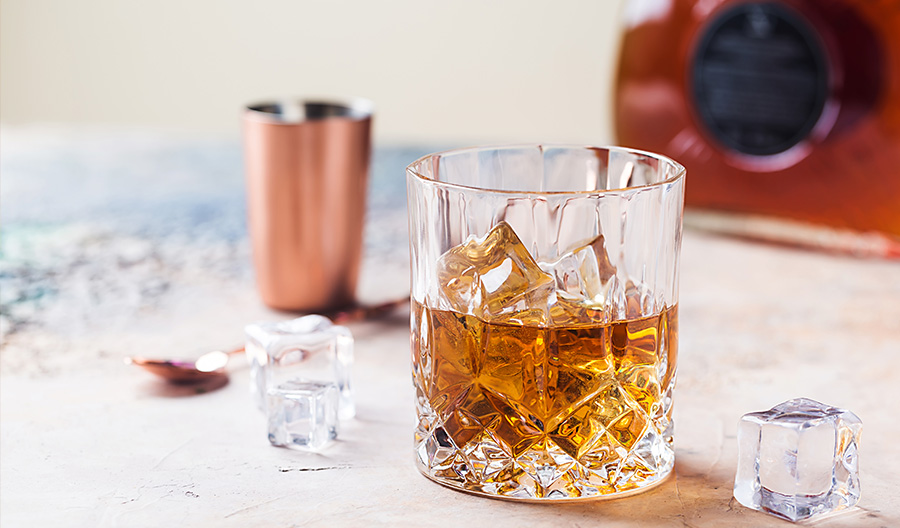While there are some variations in individual producers’ styles and distillation techniques, most bourbon follows a similar process.
1. A master distiller determines the bourbon’s mash bill, or recipe that details the proportion of grains to be used. These grains are milled and then combined with water, before being heated. As the mash cooks, enzymes convert the grain’s starches into fermentable sugars. After cooling, yeast is added to kickstart fermentation.
2. Distillers store the mash in a vat from one to two weeks and allow it to fully ferment, which creates ethanol, or alcohol. Notably, unlike other global styles of whiskey, the entire mash is fermented—grain solids included—rather than the liquids being siphoned off beforehand. Another signature is the sour mash, a common practice in which a small portion of residual grain material from an older batch of bourbon is included in the new bourbon mash’s fermentation, along with additional yeast.

3. The mash is then transferred to a still. While some whiskey producers will strain off solids and only use the resulting liquid, called distiller’s beer or wash, others distill the mash on-grain.
4. Distillation occurs. Most bourbon is distilled twice, first in a column still (or Kentucky-style beer still), then in a copper pot still. Once it reaches 80–125 proof, distillers place the spirit in new charred oak barrels for aging (at least two years for straight bourbon, at least four years for bottled-in-bond bourbon, and often longer).
5. Distillers may dilute the product with water before and/or after distillation to reach their desired strength.
6. The final bourbon whiskey is bottled.
WHERE IS BOURBON MADE? (HINT: IT’S NOT JUST KENTUCKY)
Upwards of 95% of bourbon is made in the U.S. state of Kentucky, but it can technically be made anywhere in the U.S. (including Puerto Rico). This was stated in a 1964 U.S. Congressional resolution that declared bourbon a “distinctive product of the United States,” as well as current regulations from the Alcohol and Tobacco Tax and Trade Bureau (TTB) that simply define bourbon as a U.S. product but do not specify a required state of origin.

